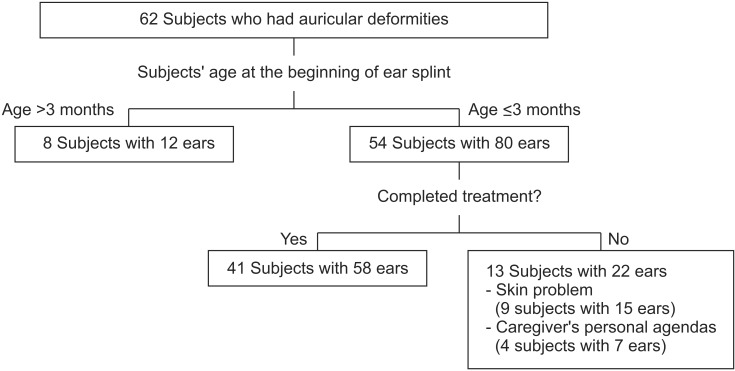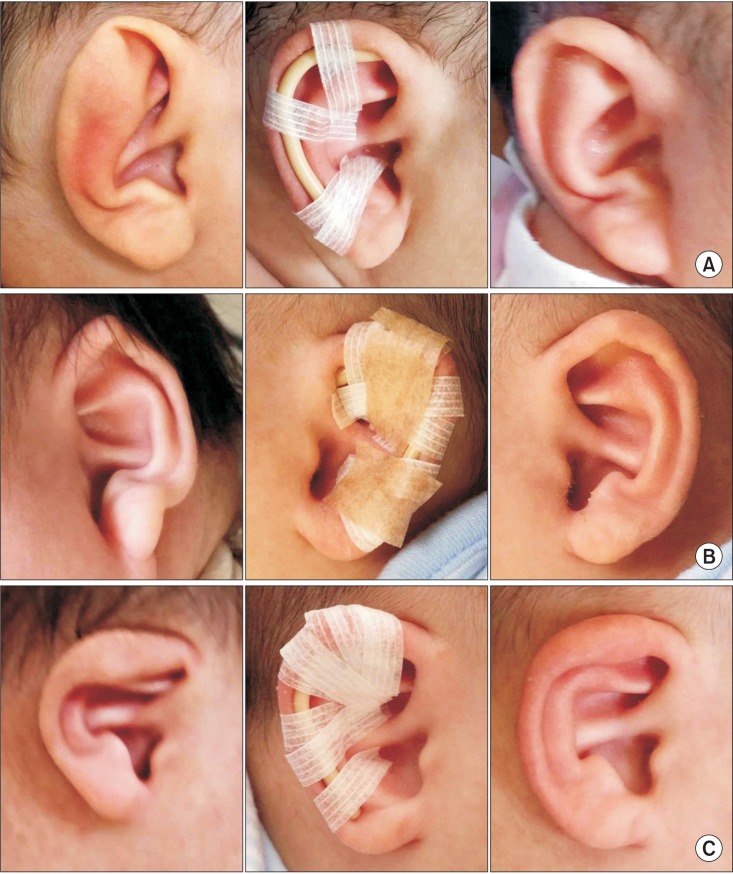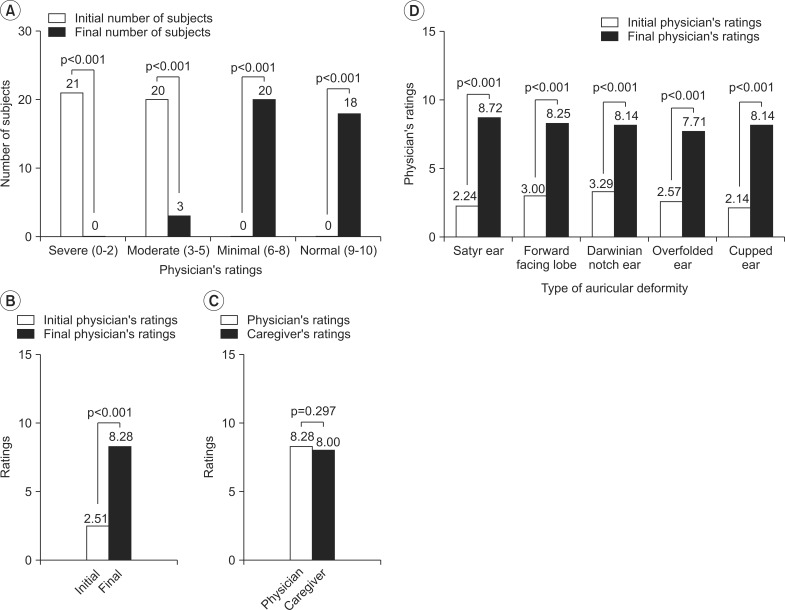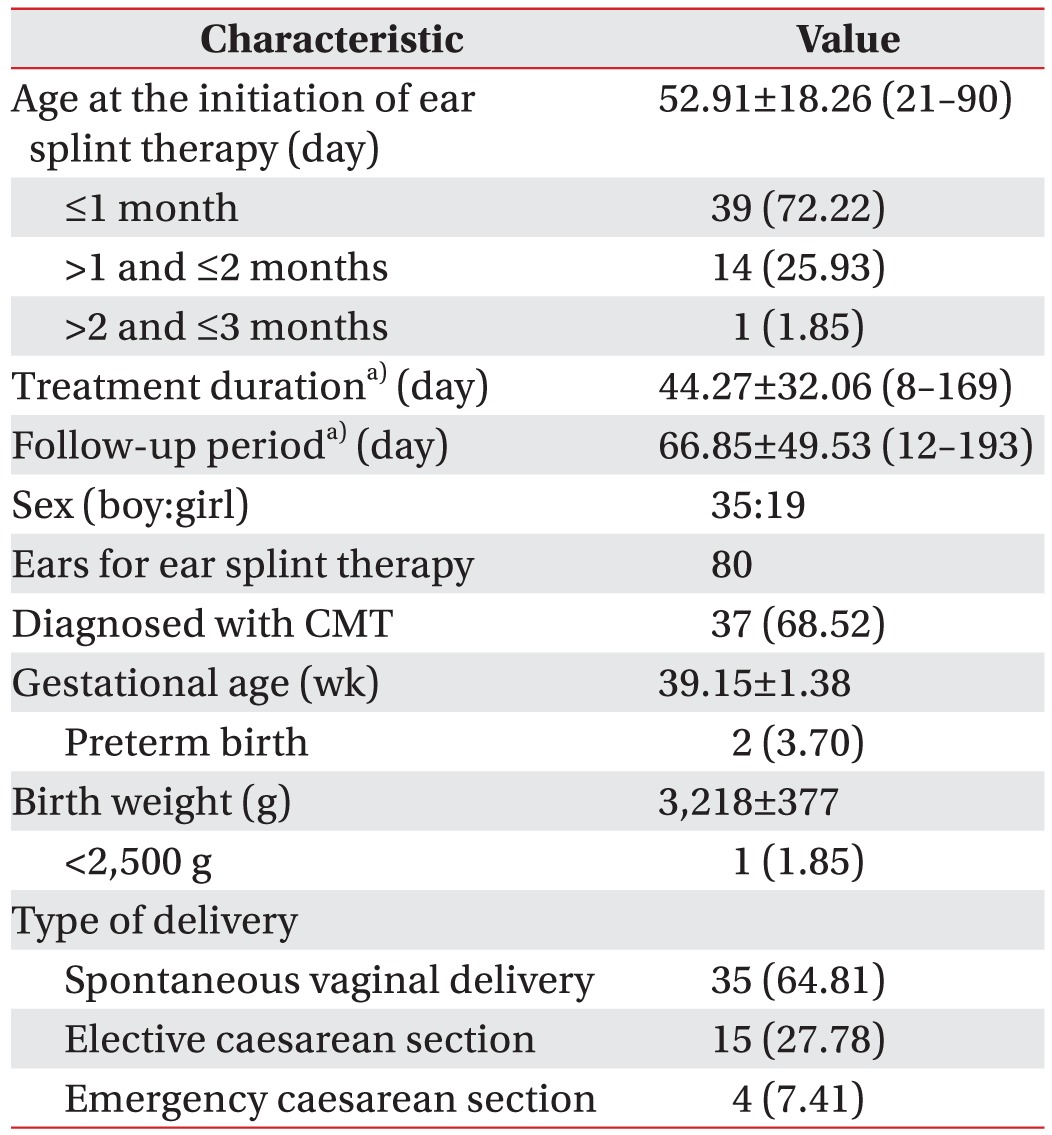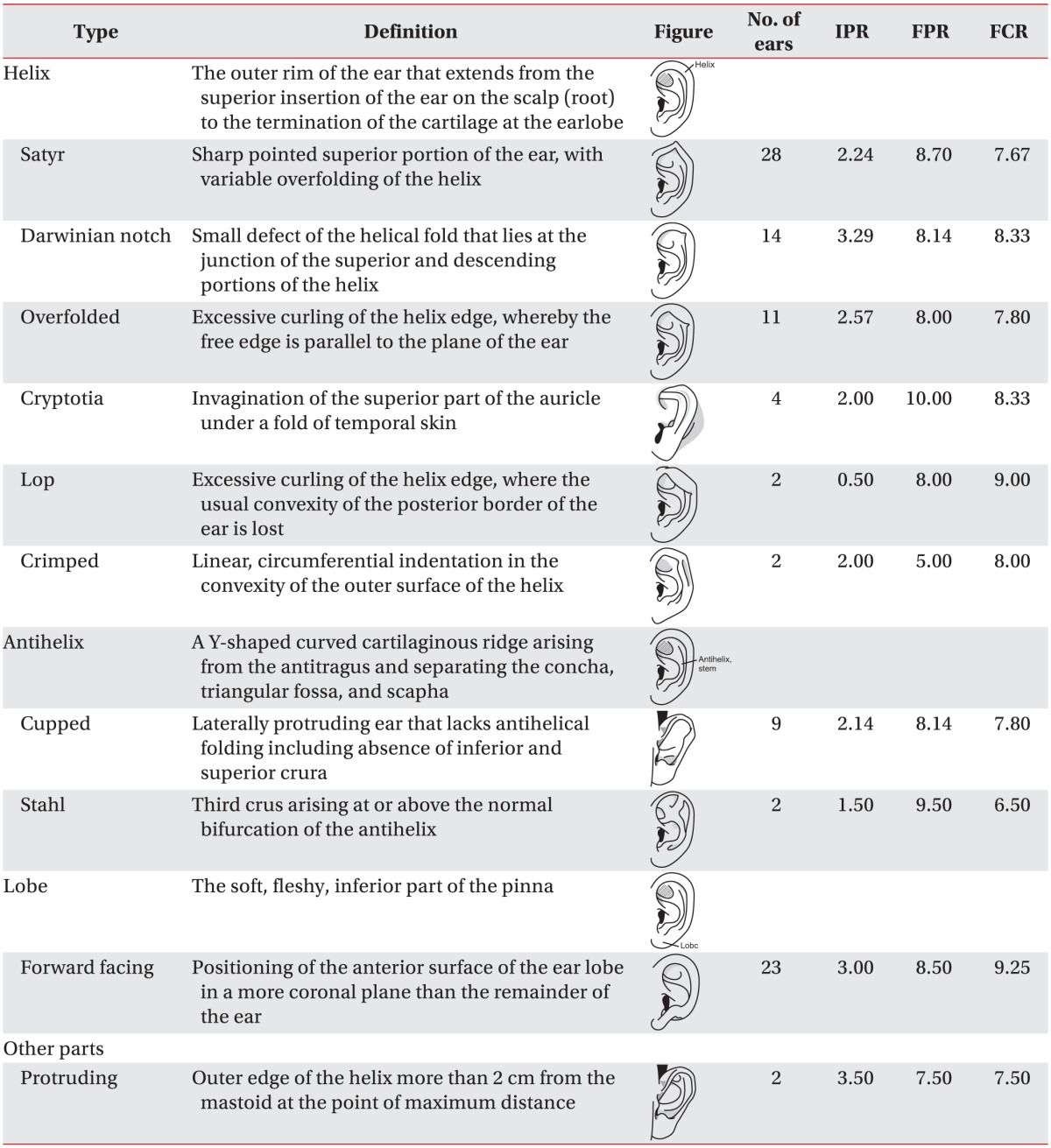1. Hunter A, Frias JL, Gillessen-Kaesbach G, Hughes H, Jones KL, Wilson L. Elements of morphology: standard terminology for the ear. Am J Med Genet A 2009;149A:40-60. PMID:
19152421.


2. Bartel-Friedrich S, Wulke C. Classification and diagnosis of ear malformations. GMS Curr Top Otorhinolaryngol Head Neck Surg 2007;6:Doc05PMID:
22073081.

4. Matsuo K, Hayashi R, Kiyono M, Hirose T, Netsu Y. Nonsurgical correction of congenital auricular deformities. Clin Plast Surg 1990;17:383-395. PMID:
2189652.


5. Kuo AA, Tritasavit S, Graham JM Jr. Congenital muscular torticollis and positional plagiocephaly. Pediatr Rev 2014;35:79-87. quiz 87. PMID:
24488831.


6. Kurozumi N, Ono S, Ishida H. Non-surgical correction of a congenital lop ear deformity by splinting with Reston foam. Br J Plast Surg 1982;35:181-182. PMID:
7082894.


7. Leonardi A, Bianca C, Basile E, Ungari C, Arangio P, Filiaci F, et al. Neonatal molding in deformational auricular anomalies. Eur Rev Med Pharmacol Sci 2012;16:1554-1558. PMID:
23111969.

8. Byrd HS, Langevin CJ, Ghidoni LA. Ear molding in newborn infants with auricular deformities. Plast Reconstr Surg 2010;126:1191-1200. PMID:
20453717.


9. Schonauer F, La Rusca I, Molea G. Non-surgical correction of deformational auricular anomalies. J Plast Reconstr Aesthet Surg 2009;62:876-883. PMID:
18490209.


10. Sorribes MM, Tos M. Nonsurgical treatment of prominent ears with the Auri method. Arch Otolaryngol Head Neck Surg 2002;128:1369-1376. PMID:
12479722.


12. van Wijk MP, Breugem CC, Kon M. A prospective study on non-surgical correction of protruding ears: the importance of early treatment. J Plast Reconstr Aesthet Surg 2012;65:54-60. PMID:
21903493.


13. Park C. Correction of cryptotia using an external stretching device. Ann Plast Surg 2002;48:534-538. PMID:
11981196.


14. Park JH, Kim KM, Lee YS, Kim YS, Kim YO. Nonoperative correction of congenital auricular deformities using a silicone splint. J Korean Soc Plast Reconstr Surg 2000;27:532-538.
15. Paul-Dauphin A, Guillemin F, Virion JM, Briancon S. Bias and precision in visual analogue scales: a randomized controlled trial. Am J Epidemiol 1999;150:1117-1127. PMID:
10568628.



16. McCormack HM, Horne DJ, Sheather S. Clinical applications of visual analogue scales: a critical review. Psychol Med 1988;18:1007-1019. PMID:
3078045.


17. Streiner DL, Norman GR. Health measurement scales: a practical guide to their development and use. 4th ed. New York: Oxford University Press; 2008.
18. Tan S, Wright A, Hemphill A, Ashton K, Evans J. Correction of deformational auricular anomalies by moulding: results of a fast-track service. N Z Med J 2003;116:U584PMID:
14581967.

19. van Wijk MP, Breugem CC, Kon M. Non-surgical correction of congenital deformities of the auricle: a systematic review of the literature. J Plast Reconstr Aesthet Surg 2009;62:727-736. PMID:
19328756.


20. Fraser L, Starritt N, Melia L, Kubba H. Development of a screening service for neonatal ear deformity using neonatal hearing screeners and an information leaflet. Int J Pediatr Otorhinolaryngol 2013;77:538-543. PMID:
23411133.


21. Yotsuyanagi T. Nonsurgical correction of congenital auricular deformities in children older than early neonates. Plast Reconstr Surg 2004;114:190-191. PMID:
15220591.


22. Doft MA, Goodkind AB, Diamond S, DiPace JI, Kacker A, LaBruna AN. The newborn butterfly project : a shortened treatment protocol for ear molding. Plast Reconstr Surg 2015;135:577e-583e.


23. Swift B, Rutty GN. The human ear: its role in forensic practice. J Forensic Sci 2003;48:153-160. PMID:
12570218.


24. Petersson RS, Recker CA, Martin JR, Driscoll CL, Friedman O. Identification of congenital auricular deformities during newborn hearing screening allows for nonsurgical correction: a Mayo Clinic pilot study. Int J Pediatr Otorhinolaryngol 2012;76:1406-1412. PMID:
22770593.







